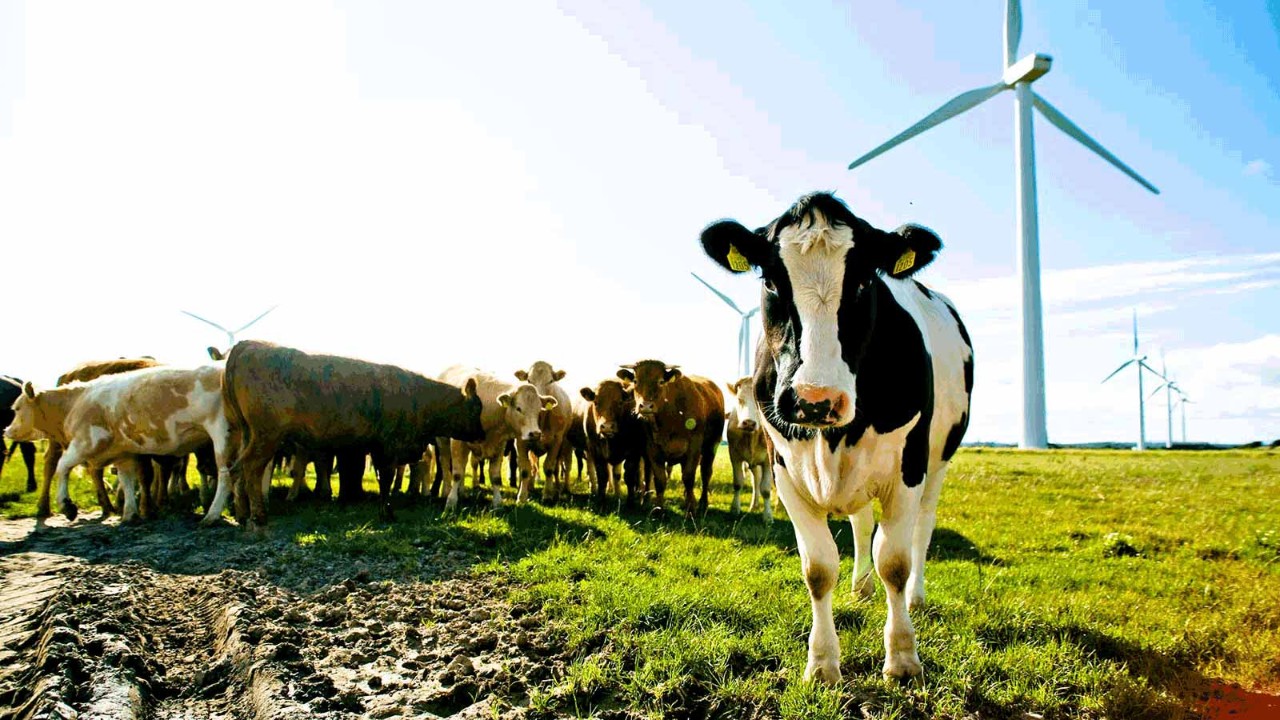
The abolition of milk quotas eight years ago heralded a new era for Irish dairy, which achieved record exports of €6.8bn in 2022, an increase of 33% on the previous year. Agriculture may be dwindling in overall importance to Irish GDP, but it holds an outsized presence across the rural economy.
‘Agriculture accounts for 30% of total expenditure in the Irish economy by all businesses’
Writing for Agriland agriculture news website earlier this year, farm economist Ciaran Fitzgerald said it ‘beggars belief’ that more recognition is not given to an industry that supports ‘almost one job in 10 in the Irish economy’ and ‘accounts for 30% of total expenditure in the Irish economy by all businesses’.
Emissions growth
But it is another element of the dairy industry’s outsized presence that is currently under the spotlight. According to the Environmental Protection Agency (EPA), agriculture accounted for 38.4% of Ireland’s national greenhouse gas (GHG) emissions in 2022, a much larger percentage than its EU peers, with higher dairy cow numbers and increased milk production a key factor in recent growth in emissions.
Agriculture will fall far short of government commitments to a 25% reduction in GHG by 2030
The Central Statistics Office, meanwhile, found that 2022 emissions from Ireland’s agricultural sector were the second most ‘intense’ in the EU, with dairy production a key factor. Looking ahead, the picture doesn’t get any rosier, as the EPA believes that agriculture will fall far short of government commitments to a 25% reduction in GHG by 2030, with the actual reduction as low as 4% if no additional measures are taken.
An Irish Independent report earlier this year of government plans to cull 65,000 dairy cows annually to help the industry close the gap on emissions by 2030 is an indicator of how seriously this data is being taken. Farm leaders have responded by saying that any culls must be voluntary, and politicians will be keenly aware that heavy-handed interventions have the potential to backfire, chiefly on them.
Basics
€6.8bn
Value of Irish dairy exports in 2022
1.7m
Tonnes of Irish dairy product exported in 2022 to over 130 markets worldwide
€117,039
Average debt of Irish farmer with farm borrowings
17,000
Number of dairy farmers in Ireland
91
Average herd size of Irish dairy farm
2
Position of Kerrygold in US butter market
Sources: Bord Bia, Irish Farmers Journal, Ornua
In the Netherlands, government plans for the compulsory purchase of livestock farms to tackle emissions saw the emergence of a new farmers’ party. In March this year, it shocked the Dutch political establishment by becoming the biggest political party in the country’s senate.
Complicating the picture further are changes announced to the ‘nitrogen cap’ this year. The EU’s Nitrates Directive permits the use of a maximum 170 kg of organic nitrogen per hectare, to mitigate risks to water quality, and Ireland has benefited from a time limited derogation of up to 250 kg per hectare. This is set to expire on 1 January 2026, and the derogation limit is due to reduce to 220 kg/ha on 1 January 2024 in certain areas, because the latest water quality results have not shown sufficient improvement. The Irish government has said there is no prospect of an extension, while the Irish Farmers’ Association estimates the overall loss to the rural economy could be €236m.
Bigger picture
Many will hope that more benign solutions can come into play before culls need to be considered. Ongoing research into feed additives that significantly reduce methane emissions have produced promising results. The dairy sector has also long argued that its pasture-based approach and the bigger question of global food security needs to be considered.
‘Eighteen months ago, if you had mentioned food security, you’d be laughed out of court’
Reflecting on the geopolitical issue, Fianna Fail TD Jackie Cahill noted recently that ‘war in Ukraine has definitely got people in Brussels to sit up and take notice of food security. Eighteen months ago, if you had mentioned food security, you’d be laughed out of court.’
Weighing against the argument of a special case for Irish dairy, however, is the view of the UN’s Intergovernmental Panel on Climate Change, echoed by other international policy heavyweights, that food security globally should involve a decisive move away from livestock production and towards more plant-based diets.
Openminded and optimistic
Farmers themselves are not oblivious to the debate going on around them. While sustainability reporting is unlikely to become a requirement in farm accounting any time soon, most farmers are well placed to provide key data. Bord Bia’s Origin Green, a sustainability initiative that counts virtually all of Ireland’s dairy farmers as members, involves regular audits where a team of over 100 independent auditors measure the emissions from individual farms and set out tailored steps to reduce them.
Research suggests Irish farmers are openminded and optimistic about the future
Research suggests Irish farmers are open-minded and optimistic about the future. The Irish Farm Accounts Co-operative Society’s 2023 Irish farm report found that 40% of respondents would consider organic production, 41% are interested in leasing their land to solar or wind projects, and 74% expect to be farming in five years’ time.
Difficult decisions
The relative buoyancy in farm-gate prices certainly contributes to that optimism but it is the EU’s Common Agricultural Policy (CAP) that largely underpins the future viability of Irish agriculture. In October last year, the government approved Ireland’s 2023-27 CAP strategic plan, with a new sustainability focus, which it said will bring almost €10bn to the sector. The plan adopts a performance-based approach rather than the compliance-based approach followed previously, and has a strong emphasis on the achievement of a higher level of climate and environment ambition through a new ‘Green Architecture’.
As the clock ticks to 2030 and climate change becomes ever more tangible to the public, tackling the issue of dairy emissions will almost certainly require difficult decisions. Robust financial reporting and data analysis will help farmers, consumers and government understand the challenges facing the sector and the impact of measures taken to address them.
More information
ACCA’s annual virtual conference, ‘Accounting for the Future’ features sessions on finance and sustainability. Register today to watch live on 21-23 November or on-demand.


